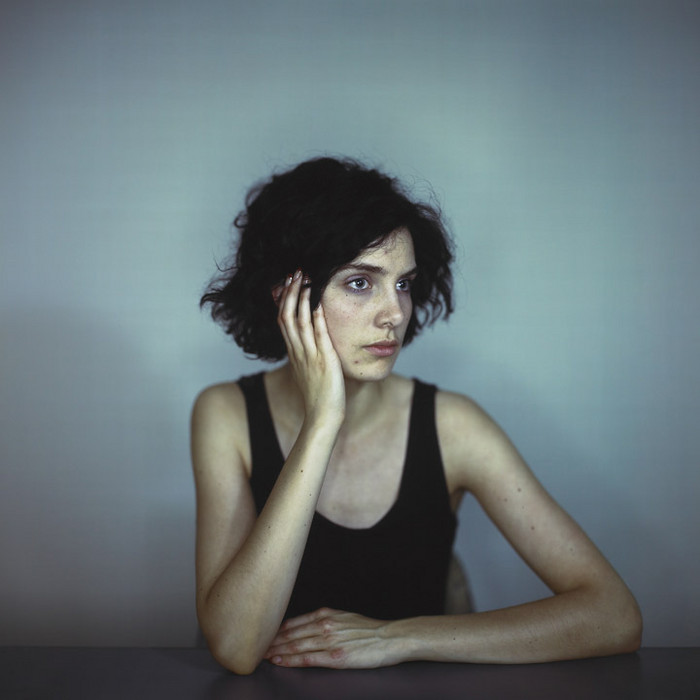Last week Sophie and I went to visit the newly reopened Scottish National Portrait Gallery. The new layout is accessible – more so than before – and reminds me of the McManus in Dundee, being of a similar period: a glorious building indeed, with one of the most spectacular foyers I know of.
The museum does, of course, have many of the usual suspects – many of the kinds of paintings that one would expect from a portrait gallery including one of the most striking paintings of Mary Queen of Scots, which you can get up close and intimate with. Some of my favourite pieces in the collection, however, are the early photographs: The John Muir-Wood salt-prints, Paul Strand’s photogravure and Archibald Burns‘ views of Edinburgh in the 1850s, counterposed with the humour of Catriona Grant’s Cows, and the imaginative use of photography in Calum Colvin‘s work (though I am not impressed with the inkjet-on-canvas that is on display, and cheekily described as a ‘Giclée’).
 One piece, however, stole all of my attention. This giant photographic image – over a metre square – stood out and dominated. Initially I was simply excited by its scale and colours, so I got close, only to find that its detail was infinite, and it had a familiar metallic shimmer. The label said that it was by Richard Learoyd, and that it is a direct positive made on Cibacrhome (or Ilfocrhome) in a purpose built camera, and on loan from the artist.
One piece, however, stole all of my attention. This giant photographic image – over a metre square – stood out and dominated. Initially I was simply excited by its scale and colours, so I got close, only to find that its detail was infinite, and it had a familiar metallic shimmer. The label said that it was by Richard Learoyd, and that it is a direct positive made on Cibacrhome (or Ilfocrhome) in a purpose built camera, and on loan from the artist.
It is such an alien experience to walk up to a print (as I often do), and not find any defects nor artefacts in the print itself: I am so used to seeing decay in a strand of hair, where a digital input or output device has been unable to describe a sharp diagonal. Or indeed noise in a gradient, as 8bit files are not particularly suited to describing the tonal range of such common graduated qualities of light.
Around the fingers of her right hand the depth of field is around 2cm, and within this area one strand of black hair stands out (though less distracting than that one pube in Weston’s Nude 1936) which is impeccable. Sharp as a scalpel. At this moment the image opened up to me, expanded and became infinite. Despite the fact that some digitophiles might argue that soon they will be able to reach this kind of detail as well (since an average print 1m square is a mere 139megapixels), I feel that Learoyd has created something that we may loose. What he has done, is build a camera that is more akin to a house than to a disposable camera. According to what I have read, he works from within the camera, standing inside it rather than looking through it. The image is exposed directly onto the Cibachrome, which makes a positive image without the disruption nor need of anything as intermediate as a negative. It represents a raw reality more purely than our eyes could possibly do on their own.
The only picture of his camera that I have found is here, which shows little more than its size and a hint of the size of the light-bank needed to expose such a mammoth of an image. Of course making images like this is not particularly practical, and hence why Learoy appears to be the only person making pictures of this kind.
I don’t think I have ever had such a gobsmacking experience with a photograph that I did not already know and love. The beauty of reality created by Learoyd is one-off and one of a kind. Nothing artificial has interpreted nor interfered with it. The relationship between scale of the the subject and lens, the chemistry and artistry in his process is one that no digital arrangement will ever truly mimic. And yet mimicry is seemingly one of the most important omissions in his process.
I highly recommend that, if you have the chance, you visit one of Learoyd’s images. I say visit, as I think it is a little more than just going to see a photograph: it is more like visiting a classic painting that you have known for years, but never seen in its physical state. And yet at the same time, it is more intimate, as you are entering a real world that you have never seen before.
